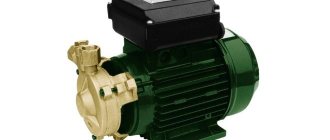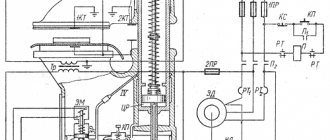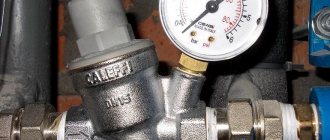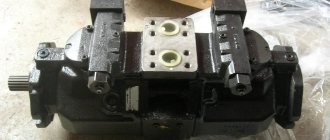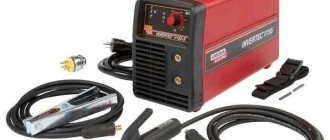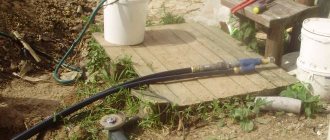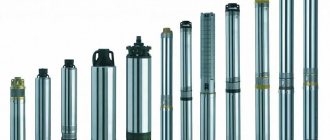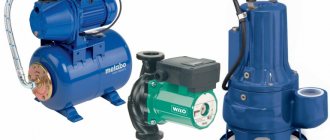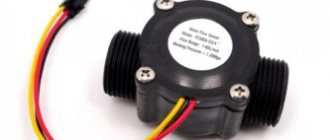To ensure the stability and durability of the operation of an autonomous private well, it is necessary to select equipment for pumping water that is as simple as possible in design, but at the same time reliable and functioning in any conditions. A screw pump is perfect for this. Let's look at its structure, principle of operation and purpose, what types there are and what their specifics are, what pros and cons it has, what are the features of its operation and installation rules.
The screw pump effectively pumps water even with a high sand content Source strategic-zone.ru
Screw pump - device, principle of operation, purpose
Pumping equipment, the main working unit (rotor) of which is in the form of a screw or auger, is intended primarily for pumping liquid media with a high viscosity index. For example, it can easily pump water with sand or oil within the specified operating characteristics.
Therefore, they are often equipped not only with various production cycles, but also with private autonomous wells that are not characterized by stable performance indicators - that is, at the bottom of which deposits of silt, clay or sand often occur. These are primarily Abyssinian wells, low-flow wells, ordinary wells or reservoirs. In addition, the equipment is of the submersible type, which means that it has maximum pressure and is optimally suited for installation in a well, especially in regions where winter occurs.
A household screw pump has the following device:
- A separate compartment for placing a vertical single-phase electric drive with a dry-type rotor. It is separated from the hydraulic part by an oil chamber. The start capacitor is located in the lower area.
Schematic design of a screw pump Source dfogorod.ru
- Hydraulic compartment of the housing. Inside it there is a working auger with a coupling in a rubber cage and a water filter. In the body itself there are water intake holes, passing through which water is pushed by a screw mechanism to the pipe.
- Perforated stainless steel cylinder for water intake.
- Cover with eyes - it contains loops for attaching a lifting cable and an outlet tube with threads for fixing a check valve and a water-lifting hose.
The pump housing is made of stainless steel, cast iron or plastic.
Mechanism of action
The principle of operation of a screw pump for a well comes down to the following simple algorithm:
- Water from the well channel penetrates into the working chamber through the perforated part of the housing.
- A rotating auger takes in water and directs it to the outlet pipe.
- The helical axis formed between the body and the auger protrusions prevents water from escaping out.
Moreover, the higher the frequency the rotor and screw rotate, the higher the feed speed, and the greater the volume of water pumped per unit time.
The main working element of the pump is a rotor with a screw Source sadovij-pomoshnik.ru
See also: Catalog of companies that specialize in water supply, sewerage and related work
Purpose
Screw pumps are used in everyday life when the following pressing issues need to be resolved:
- Permanent or seasonal water supply for a private house, cottage, bathhouse.
- Filling and emptying artificial reservoirs - swimming pools, ponds, containers for watering the garden or heating the house.
- Irrigation of green areas, garden, vegetable garden.
- Drainage of low terrain areas, as well as inside buildings during seasonal rising water or flooding.
- Initial pumping of the well after drilling.
- Cleaning wells and wells from bottom sediments.
Important! When choosing a screw type pump, you need to pay attention to the dimensions of its main working element - the screw. The longer its length, the more productive the equipment is.
Advantages and disadvantages
A screw pump for a well has the following number of advantages:
- Quite high productivity – up to 70%.
- The minimum base price is much cheaper than centrifugal analogues.
- The simplicity of the device ensures easy operation, reliability, durability and, if necessary, quick and affordable repairs.
The main working elements of a screw pump are easy to buy and replace if necessary. Source burnavody35.ru
- The ability to pump water containing particles of sand, silt and clay without damaging the internal working elements. This allows pumps of this type to be installed in wells on sand, in the water intake of which bottom sediments often occur, and where pumps of other types quickly break down.
- The maximum depth of water intake is 8.5 m.
- Good performance characteristics - absence of noise and pulsation, small dimensions.
The disadvantages are as follows:
- High prices for high-quality models from well-known manufacturers. This is explained primarily by the complexity of production technology.
- Burnout during idle operation, that is, when the working part is out of the water.
- Lack of adjustment of water intake volume.
On a note! Screw models are characterized by a small diameter and elongated shape, which, however, does not limit their performance. Therefore, they are very convenient to use as submersible equipment for small-diameter wells.
The screw pump has a small diameter, but considerable power Source tssp.kz
Geometry of gerotor pairs
The performance of a screw pump depends on the volume of the closed cavities of the gerotor pair and the speed of the gear motor, and the pressure created by the pump depends on the number of closed cavities per unit length of the gerotor pair and the power of the electric motor. Since the characteristics of a screw pump largely depend on the geometry of the gerotor pairs, we will consider this issue in more detail.
There are several design geometric factors that directly affect the output characteristics of a progressive cavity pump, as well as the limitations of their use. Such factors can be considered: the number of closed cavities of the gerotor pair, the cross-sectional diameter of the rotor (and stator, respectively), the volume of closed cavities between the rotor and stator.
With equal length of the gerotor pair, various modifications are possible in terms of the number of closed cavities. For example, let's consider two versions of a screw pair with the same diameter and equal length. The option with a large number of closed volumes has a smooth supply of product due to the relatively low flow rate at an increased pressure value, as well as high suction capacity. In addition, due to the increased inlet cross-sectional area, larger particles can be pumped. It is also worth noting that this design of the gerotor pair eliminates as much as possible the possibility of liquid leakage from it after the pump is stopped. The advantage of a design with fewer closed volumes is high productivity. This is due to the fact that the volume of each specific cavity, in this case, is larger than in the first option. This design has high volumetric characteristics with a long turnaround time due to the long contact line between the rotor and stator. Therefore, when designing and selecting a screw pump for a particular consumer task, it is first necessary to be guided by the geometry of the gerotor pair and the characteristics of the geared motor.
Varieties
Due to the fact that screw pumps can have different purposes and conditions of use, they can differ in design features and operating principles. There are the following main modifications:
- Screw . Designed for pumping water with solid particles, as well as chemically aggressive liquids. Installed in both vertical and horizontal positions. Suitable for both boreholes and wells. They are characterized by a simple design and low cost.
- Rod _ The main purpose is pumping viscous media, for example, in the oil refining industry. The device includes an external drive, a rotation column and a wellhead type gland. It is characterized by great power, but also a high price.
- Vacuum . The design has 2 rotors rotating in opposite directions. The principle of operation is based on the fact that water first enters the space between the cylinder and the chambers, and then exits into the outlet pipe.
Screw-type screw pump Source stroy-podskazka.ru
Note! Household screw-type models are divided according to the permissible depth of application. Standard units allow you to pump water from a depth of up to 25 m at a low flow rate. Their deep counterparts are distinguished by an elongated auger and are designed to lift water up to 100 m from artesian sources.
Features of operation
A screw pump for a well can operate for decades in trouble-free condition thanks to the following operating features:
- The motor is cooled naturally - by the pumped water itself. Therefore, it is always located below the intake holes.
- The quiet operation of the equipment allows you to make a well as close to the house as possible.
- The absence of vibrations eliminates the impact of the motor on the walls of the borehole channel.
- Detection of breakdowns and malfunctions of equipment is accessible even to a non-professional, due to the simplicity of the device.
Screw-type models work equally effectively in vertical and horizontal orientations. This means that they can be used to pump water not only from a well, but also from a river, stream, well and any other suitable body of water.
Principle of operation
Today, borehole screw pumps are very common in a wide variety of industries. When considering how a submersible well pump works, we note the following points:
- The pressure is created by rotating the screw.
- An electric motor is installed for rotation. It can be characterized by a fairly large number of different properties, for example, power and energy consumption.
- The housing provides the required level of tightness. It is made of metal and plastic, and there are also rubber gaskets.
In general, we can say that the operating principle of the device determines its very wide distribution.
Installation Rules
In order for the submersible screw pump to last as long as possible, the following rules must be observed during installation:
- The water riser pipe must withstand the highest pressure in the system and match the dimensions of the outlet pipe.
- The flexible hose must prevent the formation of twists and kinks.
- Lifting and lowering of equipment should be carried out using nylon or steel cable. In any case, the pump must not be suspended by the electrical conductor.
- The diameter of the casing must allow the free passage of equipment, including cables and pipes.
- The pump should not be located less than 0.5 m from the bottom of the well.
- The unit should not pump water with the water shut-off valve closed.
- Pumping equipment must be equipped with a dry-running safety sensor.
- The electric cable should not be in a coil, as this will lead to overheating and melting of the insulation.
Advice! If the model is not equipped with a check valve from the factory, it must be installed during installation - on the outlet pipe in front of the water intake line.
Accessories
As mentioned earlier, for ease of operation, horizontal screw pumps can be supplied on mobile transport trolleys. The trolley pump option is used when there is a constant or periodic need to pump liquids in different parts of one workshop or the enterprise as a whole. The trolley can, as a place for installing additional equipment, approx. frequency converter.
For barrel screw pumps, by analogy with horizontal screw pumps, a bypass valve is installed. The bypass valve is connected directly to the pump discharge pipe. During operation of the pump, the pumped liquid acquires inertial force. When the valve in the supply line is closed and the pump motor is stopped, fluid continues to flow out of the pump, creating pressure. To avoid rupture of the pressure hose, a bypass valve is installed. It is mechanically adjusted to open at a certain pressure and allows liquid, which moves by inertia, to flow back into the container.
Since barrel screw pumps are designed to operate in mobile containers, they must be constantly installed from one container to another. Since the mass of these pumps is much greater than that of barrel centrifugal pumps, their reinstallation from container to container takes a lot of effort from the operating personnel. Therefore, the motors of barrel screw pumps are produced with an additional mounting bracket. It provides easy installation and dismantling of the pump using a hoist or crane beam. If the production facility where the barrel pump is used does not have lifting mechanisms, you can purchase a special trolley for barrels with a lifting device.
Briefly about the main thing
Screw pumping equipment pumps water due to the movement of a special working element of the screw. This device allows you to pump without damage not only water, but also more viscous media, including those containing sand, silt and clay. The pump consists of electrical equipment with a motor, a hydraulic part, a water intake cylinder, a cover with eyes and a pipe.
Water, entering through the holes, enters the screw, which, during rotation, lifts it and delivers it to the outlet pipe. A screw pump is used in everyday life to supply water to a house or bathhouse, fill or empty a swimming pool and other reservoirs, water plants, drain floods, as well as pump and clean a well. Its main advantages:
- Low base price.
- Great performance.
- Simple design.
- Possibility of pumping water with silt and sand.
- The greatest depth of the fence is 8.5 m.
- Acceptable operating parameters.
The disadvantages are associated with the high cost of high-quality models, rapid burnout when idling and lack of adjustment of the volume of water intake. Pumps are divided into 3 types - screw, rod and vacuum. Each of them has its own pros, cons and specific application. Durability and trouble-free operation are ensured by special operating conditions and compliance with special rules during installation.
